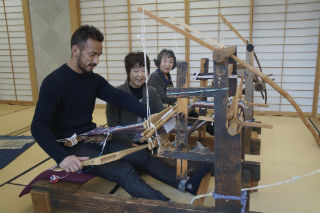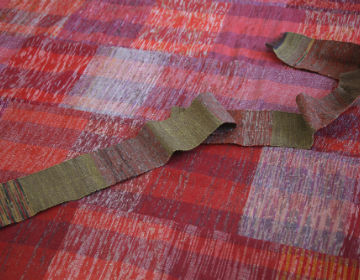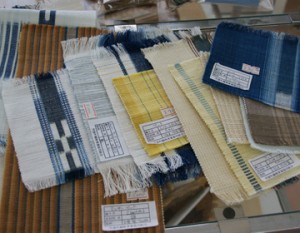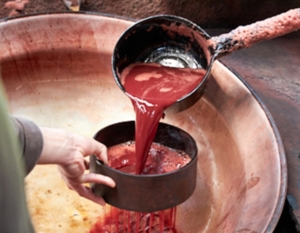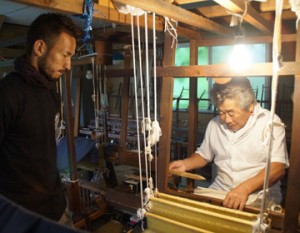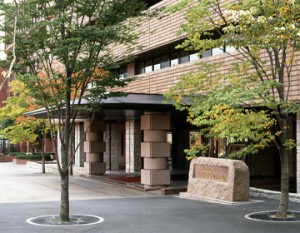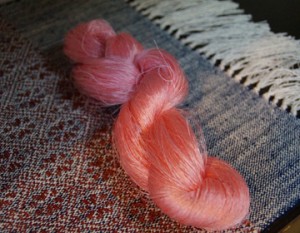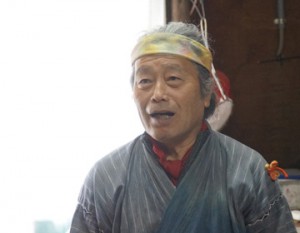Recycle old cloth
It is a folk art written ”裂織” and read ”sakiori”. Sakiori is tearing old cloth into fine pieces, and weaving them together with other yarn. It is said that originally, it started during the mid Edo period in the Tohoku region when textile products such as cotton or silk were valuable. Also in the Nanbu region in eastern Aomori, cotton was a rare material, and people used ”sakiori” in order to cope with the cold climate. That is the origin of Nabu Sakiori that has been passed on to the present. We interviewed Sumiko Inoue who opened Nanbu Sakiori Koubou ”CHOU” and continues to weave in the regional tradition.
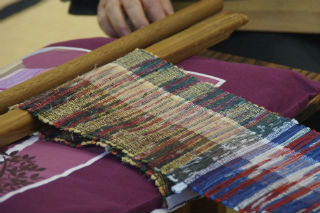
Sakiori, which was woven 150 years ago
Nanbu Sakiori is not only used for clothing, but various other large items such as kotatsu covers or small things like accessories or bags. ”I made you a present.” Inoue said and gave Nakata a business card holder. The business card holder used to be a thickly-wadded large size kimono, exuded a warmth. She also showed as a sashiori which was woven about 150 years ago saying ”This sashiori was woven about 150 years ago during the Meiji era. So, the original cloth that we use here is from the Edo period. ”
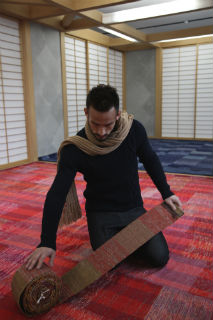
Thinking about how people used to live
To use an old cloth means there was someone who had used the cloth in the past. Saying that ”You have to give care for things you use” might sound rather moralistic. But if you think about the lives of those who used the cloth before you, the words have a different meaning. The cloth is connected to those people in the true sense of the word. Rather than being old, they are new, beautiful and present. The images of those people might come to mind. This is the ultimate form of recycling.
